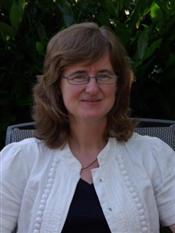Program Information
Model Observer Design and Its Validation for Task-Based Evaluation of Digital Breast Tomosynthesis
J Lo1*, S Glick2*, H Gifford3*, H Bosmans4*, (1) Duke University Medical Center, Durham, NC, (2) U.S. Food and Drug Administration, Silver Spring, MD, (3) University of Houston, Houston, TX, (4) KU Leuven, Leuven, Vlaams-Brabant
Presentations
7:30 AM : Virtual and Physical Breast Phantoms That Mimic Patients - J Lo, Presenting Author8:00 AM : Digital Breast Tomosynthesis Virtual Clinical Trial Research at the FDA - S Glick, Presenting Author
8:30 AM : Identifying Useful Features for Visual-Search Model Observers - H Gifford, Presenting Author
9:00 AM : Practical Examples of Model Observer Applications in Digital Breast Tomosynthesis - H Bosmans, Presenting Author
TU-AB-209-0 (Tuesday, August 2, 2016) 7:30 AM - 9:30 AM Room: 209
Digital breast tomosynthesis (DBT), a limited-angle tomographic technique by its nature has multiple optimal system configurations, which can lead to many potential changes to the existing and new DBT systems entering the US market. With the availability of computational tools such as for modeling imaging physics, it is becoming increasingly important to conduct virtual trials for a rigorous, preclinical and task-based assessment of DBT. For such virtual assessment to be successful, it is critical to: (1) develop model-observer approaches that can account for patient data statistics stemming from realistic or real breast backgrounds as well as lesion characteristics, thereby performing given tasks effectively and (2) validate the model-observer approaches and their performance trends/levels with physical measurements from a prototype or real DBT system and a physical phantom ensemble. It is also important to understand trade-offs between patient (phantom) sample/effect size and observer performance reliability for gaining knowledge on how to choose appropriate model observers for the given tasks. In this session, a variety of model-observer approaches associated with currently available breast phantoms (either physical or virtual) and their sample size will be discussed. The presenters in this session will also discuss the limitations of each model observer approach to provide an understanding of the circumstances where each of these approaches can be more suitable than the others. The session is organized as follows: First, the development of virtual and physical phantoms that mimic breast anatomy will be presented. This will be followed by two presentations on model observers for DBT, one on the designing of model observers for signal-known-exactly (SKE) tasks and another on the development of visual search based model observers with the intent of identifying useful image features. Finally, this will be followed by practical examples where such model observers are applied to digital breast tomosynthesis.
Handouts
- 115-31672-393514-119212.pdf (H Bosmans)
- 115-31673-393514-119241.pdf (H Gifford)
- 115-31675-393514-118521.pdf (J Lo)
- 115-34682-393514-122238.pdf (S Glick)
Contact Email:







